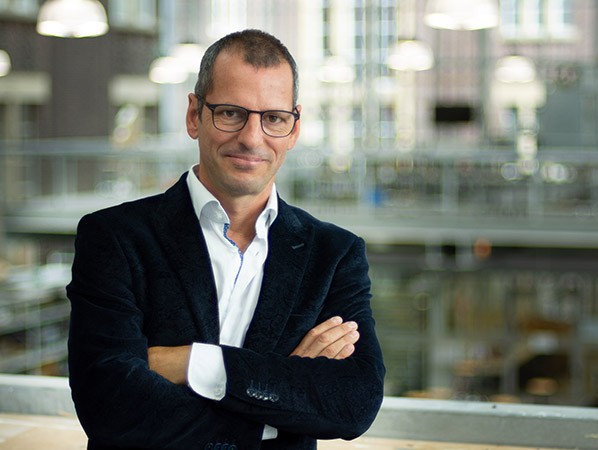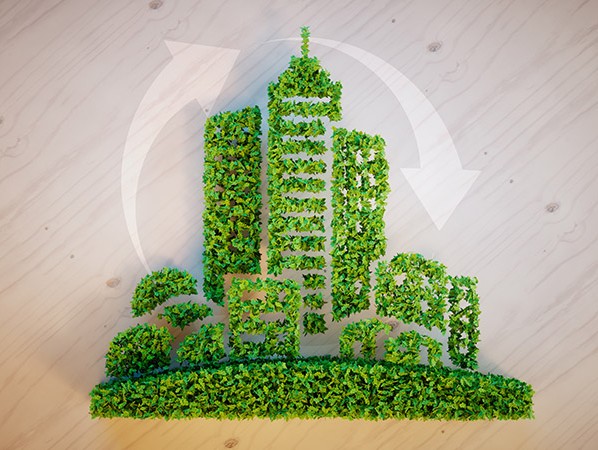
Prof.dr.ir Andy van den Dobbelsteen has been professor of Climate Design & Sustainability at TU Delft for 10 years now. The Climate Design & Sustainability chair is close to the technical side of engineering. His teaching and research focuses on sustainable buildings, energy systems and climate adaptation, for which new systems and solutions are being designed and created.
Every company and every organisation are dealing or will deal with it in the short term: the sustainable transformation. The Conference of Parties (CoP) that took place in Paris in late 2015 resulted in a Climate Agreement for 185 countries that will enter into force in 2020. The CO2 emission reduction is one of the most important goals of our time. Andy van den Dobbelsteen is regarded as one of the most prominent experts in the Netherlands. “I am in the field of sustainable construction, sustainable energy systems, but also climate adaptation: adapting to expected climate changes. We research and translate solutions into interventions and new concepts. We look for connections that were not there before”, he explains.
“Circular construction; so building with renewable and reusable materials. These can be bio-based or technical. The technical materials must be able to be infinitely reused and recycled; the bio-based materials have a natural origin and are renewable. Think of wood, bamboo and flax. Those materials are not new, but are fortunately gaining popularity of late. The CO2 emissions from producing them is usually lower than with technical materials.”
“Another trend in construction are Product Service Systems. These are systems in which products, such as solar panels, remain property of a company or supplier and are leased by a customer. It is an alternative economic model with a sustainable character. Technological developments are happening rapidly, and solar panels are becoming increasingly efficient. With Product Service Systems, the supplier can exchange the panels as soon as an improved version appears. And the supplier takes care of processing the old panels themselves.”
“In making smart use of residual heat; the heat energy that remains after an energy conversion. Many companies consider residual heat as a waste product, and that is a shame. For other parties, it can be a source for the sustainability of their heat supply, e.g. for heating spaces. The surplus of one company can resolve the shortage of another. So when it comes to sustainable energy, we need to start exchanging a lot more. Technically, (almost) everything is already possible. There needs to be a cultural shift from purely personal use to clustering. With the right installations, a company with cooling systems can supply their heat to an adjacent residential area, for instance. Heat distribution can result in significant fuel savings, both financially and climate-wise.”

“But from a climate point of view, it goes even further than that: the expectation is that in the coming decades, we will see a temperature increase of approximately 2 to 3 degrees in the Netherlands. This doesn’t seem like much, given that the temperature has been constant over the past centuries. Due to the ‘Urban Heat Island effect’, our cities will become even warmer than that. Through smart design, using the tools you have as a designer, you can find the most natural solution possible to this problem. Also look at historical building methods in countries where they have been dealing with high temperatures for a longer time, such as the countries surrounding the Mediterranean Sea. I was recently at a hotel in Nicosia, Cyprus. Although it was 37 degrees outside, my room was cool without artificial cooling such as air conditioning. The room was high, the building had a lot of mass, there were shutters on the windows and the room was adjacent to a green inner courtyard. We need to include those types of elements in construction in the future.”
“There is a variety of solutions. In existing buildings and buildings that need to be renovated, you can identify where the largest energy consumers are. Leakage losses, lighting, inefficient installations and insulation are often overlooked. We don’t always need innovative, high-tech interventions; simple measures can reduce energy consumption as well. The truth is that you can influence all processes.”
“Energy reduction goes beyond buildings. How do your employees go to work, for instance? If the car is their means of transport, you can look at whether electric cycling is an option. And is it necessary to travel abroad by plane or can a conference call suffice? Or take the train? There are also plenty of opportunities in waste management. Here, too, you must map the processes and take appropriate measures.”
“I sometimes say that major CO2 savings can be realised in the canteen. Not just here at TU Delft, but in catering in general, there is the idea that food without a slice of meat is not food at all, which is very old-fashioned. We need a cultural shift in that regard. Not just in the Netherlands, but all over the world, there are opportunities for companies who bring plant-based, meat-substitute products onto the market that result in far less CO2 emissions than the production and processing of meat.”
“Biomimicry, from the Greek bios (life) and mimesis (imitation), is the science that stands for learning from nature. Nature has developed many, many solutions over the past 3.8 billion years. These are often more intelligent than man-made versions, and certainly also more sustainable. Mimicking and applying these principles can make our buildings, products and processes much smarter. You can use biomimicry in both construction and in designing the business processes of a building. Principles from nature are not necessarily new, but are often forgotten as a source of inspiration for our technical world. Solutions for the challenges we all face largely come down to ‘revisiting and applying old, smart principles’ combined with new technology. Synergy between these is of crucial importance.”
Knight
The Royal Institute of Engineers (KIVI) recently presented the KIVI Academic Society Award to professor Andy van den Dobbelsteen. He received the award for his years of having a pioneering role in the field of sustainable construction and his striking presence in the climate debate. Last year, he was knighted for his sustainability work. In his 25-year career at TU Delft, Andy van den Dobbelsteen has led and carried out many research projects. He also participated in various committees and juries. He publishes and presents both inside and outside the academic world, at both the national and international level.
Image portret: ©COK FRANCKEN, Image building: ©MARLEENS/SHUTTERSTOCK.COM
Source: © Vakblad Voedingsindustrie 2019